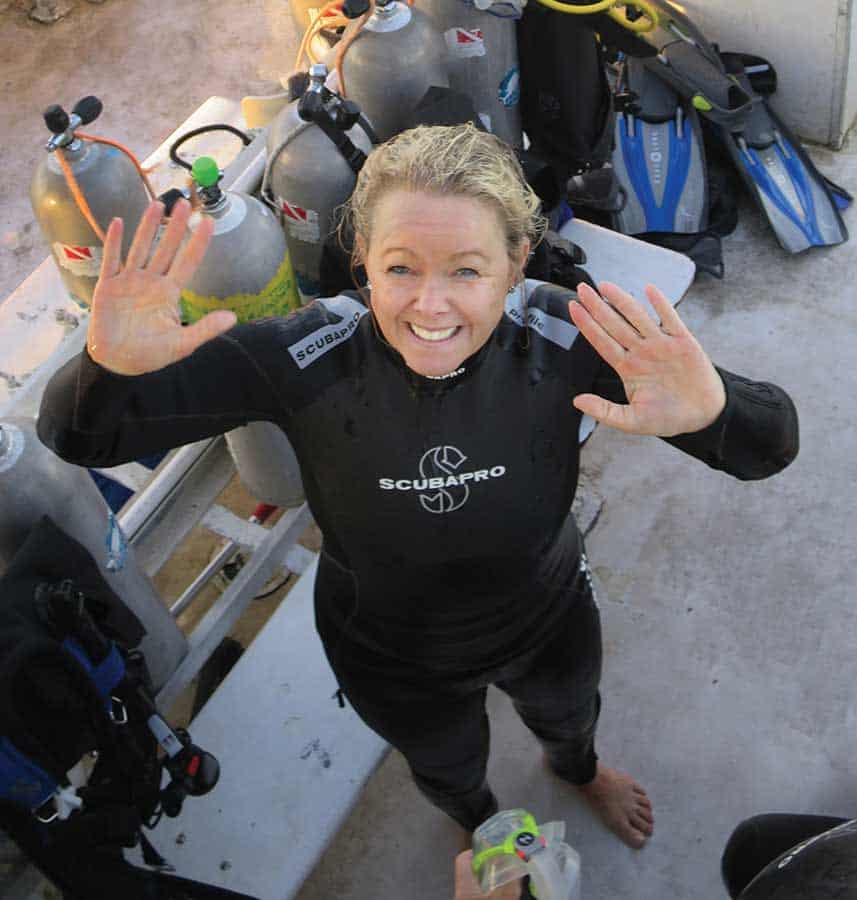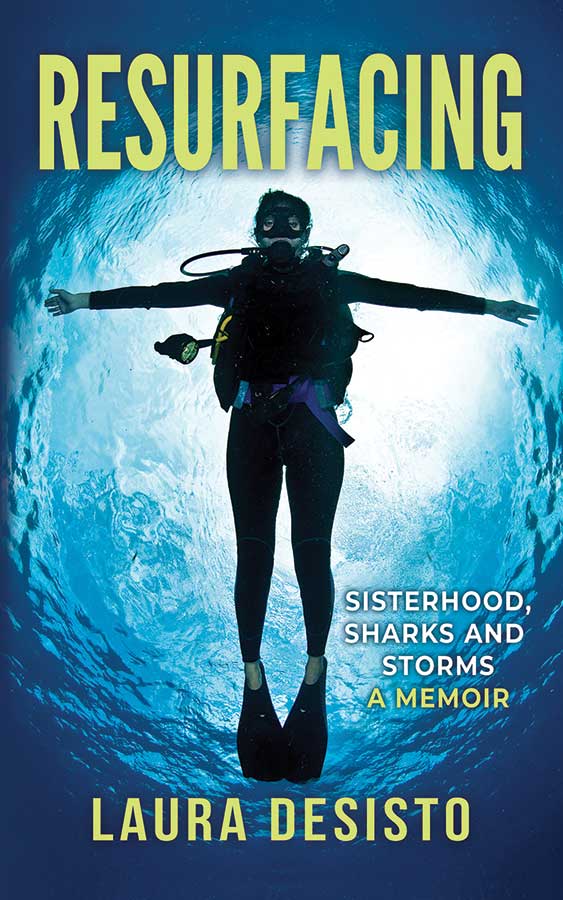Writer Laura DeSisto’s recently published memoir “Resurfacing: Sisterhood, Sharks and Storms’’ is an inspiring story of self-discovery. We recently chatted with the Cohasset author to find out more about her creative process and hear how learning to scuba dive brought her a sense of peace and a new lust for life.


Q: What inspired you to write this book?
A: I was inspired by a series of events that took place in my life in rapid succession after my kids left the nest. I had been a very involved mother of three without too much change or excitement in my life for many years. A scuba diving trip to the Bahamas with two of my closest friends became a catalyst for enormous change and growth for me. I quickly fell in love with diving and my passion for the sport helped me to feel that I could have a life separate from my role as a mother. It helped me to move past my deep sadness over my empty nest. Diving literally helped me to “resurface” into my own life–hence the title.
Q: What do you love most about diving?
A: The feeling of weightlessness when you achieve what is called “neutral buoyancy” in the water. During the dive certification training, much time is spent on learning this skill because it is critical to remain calm and balanced underwater, which in turn helps you conserve the air in your tank. I also love the fact that diving gives you access to a whole new world. I never tire of the sea creatures and coral and you never know what you will witness. No two dives are ever the same. Most importantly, I love how diving makes me feel brave. There are real physical dangers to the sport and confronting them helped me to be courageous in other areas of my life.
Q: You mean like writing a memoir?
A: Yes. Writing a memoir is an act of incredible vulnerability. I share things that I still cannot believe I put on paper. If I could have told this story in any other genre, I would have. Also, I thought only famous people should write memoirs.
Q: What changed your mind?
A: A friend suggested that I read “Still Life with Chickens: Starting over in a House by the Sea,” a memoir by Catherine Goldhammer. In the book, Goldhammer recounts getting divorced and moving into a new house in Hull where she and her daughter learn how to raise chickens. Her book made me realize that good memoir writing has nothing to do with how famous the author is–or even the events being described–it has to do with whether the author can make her personal feelings and experience relatable.
Q: What do you think the readers of your memoir will find relatable about your experiences?
A: There are some pretty raw moments where I describe my feelings over my kids leaving the nest. I think for parents, especially for women, it is a real watershed moment in our lives. I have spoken with women whose oldest children are only in middle school and they are already dreading it. Other readers might relate to my realization that I sort of let my own dreams go by the wayside for so many years. And I hope they also feel my sense of joy as I begin to rediscover my true self.
Q: The subtitle of your book is “Sisterhood, Sharks and Storms.” Can you elaborate on that?
A: The other two women who were on that first diving trip are like sisters to me, and they are central to the story. The sharks, well, I don’t want to give too much away, but let’s just say I end up facing down one of my lifelong fears under water. And the storms refer to the hard things that took place in my life during the period of time covered in the book–metaphorical storms and one actual storm–Hurricane Dorian, which devastated the Bahamas.
Q: In the story, you talk about having a bucket list. Did you always want to learn how to scuba dive?
A: Yes, as a kid I was a huge fan of Jacques Cousteau’s “Underwater World” series and had dreamed of diving for years. The other big item on my lifelong bucket list was to write a book. So, it’s really interesting how those two big dreams dovetailed into this book project.
Q: Have you always been a writer?
A: Yes, I was an English major at Boston College and my first job right out of school was at an ad agency. I wrote ad copy as a freelancer for years and then shifted to magazine writing. I also now write website content.
Q: How long did it take you to write the book?
A: About one year from rough draft to the final edited manuscript.
Q: Can you describe your writing process? Where and when did you write?
A: Pre-Covid, I wrote at the Cohasset public library in the same chair every morning. When Covid hit, I wrote at home, but still tried to write at the same time and location every day. If you do this, eventually your mind starts to prepare for creativity at a specific time and place, which is fascinating to experience.
Q: How was writing a book different from the other forms of writing you had done?
A: The main difference is the sheer amount of words you need to get down on paper. For perspective, most magazine articles I write are around 800-1,000 words. My book is 82,000 words. Just getting all those words on paper takes a great deal of time. The other enormous difference is that during the rough draft process, you have to discipline yourself not to go back and edit your work. If you do that, you will most likely get stuck in an endless loop and be unable to finish the rough draft.
Q: Any advice for aspiring writers?
A: Don’t try to reinvent the wheel. Since I had been writing my whole life, I mistakenly thought I could just sit down and write a book if I had the time and energy. The reality was that I had lots of ideas but lacked training in how to approach it. I ended up hiring a book coach who helped me with process, structure, length, etc. There are other resources out there like books, websites, and online training. I think this same principle can be applied to pursuing any bucket list item. You have to dig a little to find the resources and support you need. Then you have to take action. I hope my story is testimony that it is worth the effort.
To learn more, visit lauradesisto.com. Copies of the book can be purchased on Amazon and Kindle.
